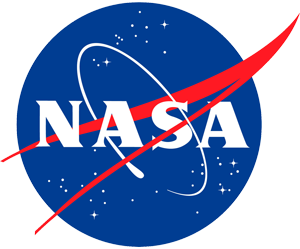RSS Monthly 1-deg Microwave Total Precipitable Water netCDF
Table of Contents
Introduction
The RSS Monthly 1-degree Microwave Total Precipitable Water (TPW) netCDF data set contains monthly mean TPW on a one degree grid, a climatology file containing a set of twelve monthly TPW means on a one degree grid, and a trend file containing the cumulative global TPW trend map on a one degree grid and the time-latitude plot. This data set was constructed using the version- 7 (V7) passive microwave geophysical ocean products made publicly available from Remote Sensing Systems (www.remss.com). The TPW values come from the following satellite radiometers: SSM/I F08 through F15, SSMIS F16 and F17, AMSR-E, and WindSat. The microwave radiometers were carefully inter-calibrated at the brightness temperature level and the V7 ocean products were produced using a consistent processing methodology for all sensors. The high quality ocean data is made available thanks to funding from the NASA MEaSUREs (Making Earth System Data Records for Use in Research Environments) project. The Global Hydrology Resource Center (GHRC), a NASA science data center managed by the University of Alabama in Huntsville, processes the cumulative TPW files from RSS into monthly files. The GHRC also provides the cumulative 20 year climatology file and the cumulative trend files. This data set contains both netCDF3 and netCDF4 formatted files.
Instrument Description
The data used to make the RSS Monthly 1-degree Microwave Total Precipitable Water (TPW) netCDF product are from all SSM/I instruments, SSMIS F16 and F17, AMSR-E, and WindSat. SSM/I and SSMIS are instruments carried onboard the Defense Meteorological Satellite Program (DMSP) series of polar orbiting satellites. The Special Sensor Microwave/Imager (SSM/I) is a seven channel passive microwave radiometer operating at four frequencies and dual-polarization. The Special Sensor Microwave Imager Sounder (SSMIS) is also a microwave radiometer that includes a sounder. Additional information on the SSM/I and the SSMIS can be found at http://www.ssmi.com/ssmi/. The Advanced Microwave Scanning Radiometer - EOS (AMSR-E) is one of six sensors aboard Aqua. AMSR-E is a twelve-channel, six-frequency, total power passive-microwave radiometer. More information on AMSR-E can be found at http://wwwghcc.msfc.nasa.gov/AMSR/. WindSat is a satellite-based polarimetric microwave radiometer which measures ocean surface wind vectors. WindSat is aboard the Coriolis satellite. More information on WindSat can be found at http://weather.msfc.nasa.gov/sport/windsat/. More information on Coriolis can be found at http://www.orbital.com/SatellitesSpace/ImagingDefense/Coriolis/.
Investigators
Frank Wentz
Remote Sensing Systems
438 First Street, Suite 200
Santa Rosa, CA 95401
File Naming Convention
The monthly files are named with the following convention:
tpw_v07r00_[YYYYMM].nc[3 or 4].nc
where,
tpw = total precipitable water
v07 = data made from version-7 RSS data
r00 = file revision number (e.g., 00 being the original version of TPW product)
YYYYMM = the year and month of the file
nc[3 or 4] = netCDF3 or netCDF4 format
nc = netCDF file format
The cumulative and climatology files are named with the following convention:
tpw_v07r00_198801_[YYYYMM]_cumulative.nc[3 or 4].nc
tpw_v07r00_
1988_[YYYY]_climatology.nc[3 or 4].nc
where,
tpw = total precipitable water
v07 = data made from version-7 RSS data
r00 = file revision number (e.g., 00 being the original version of TPW product)
198801 = the starting year and month of the cumulative data
1988 = the starting year of the climatology data
YYYYMM = the last year and month in the cumulative file
YYYY = the ending year of the climatology data
nc[3 or 4] = netCDF3 or netCDF4 format
nc = netCDF file format
Data Format
Two netCDF formats, netCDF3 and netCDF4, are available for the RSS Monthly 1-degree Microwave TPW data. The same information is available in both formats.
The monthly data files contain the following defined fields:
global_mean_precipitable_water_anomaly
latitude
latitude_bounds
longitude
longitude_bounds
platform_names
precipitable_water
precipitable_water_anomaly
satellites_used
time
time_bounds
tropical_mean_precipitable_water_anomaly
The cumulative data files contain the following defined fields:
latitude
latitude_bounds
longitude
longitude_bounds
time
time_bounds
time_lat_precipitable_water_anomaly
The cumulative climatology data files contain the following defined fields:
climatology_time
climatology_time_bounds
latitude
latitude_bounds
longitude
longitude_bounds
precipitable_water_climatology
Algorithm and Processing Steps
The Special Sensor Microwave/Imager (SSM/I) and Special Sensor Microwave Imager Sounder (SSMIS) data are produced as part of NASA's MEaSUREs Program. Remote Sensing Systems generates SSM/I and SSMIS data products using a unified, physically based algorithm to simultaneously retrieve ocean wind speed (at 10 meters), atmospheric water vapor, cloud liquid water, and rain rate. This algorithm is a product of 20 years of refinements, improvements, and verifications. While the algorithms have evolved over time, a substantial background to the radiative transfer function used to derive the geophysical parameters is described in the following papers:
Read Software
netCDF
The netCDF library is used to read or write netCDF files. It is available for several languages, including Java, C++, C, FORTRAN, and others. At the time of this writing, the netCDF-Java library is at version 4.2 and the C/C++ libraries are also at version 4.2. Version 4.2 or later is recommended, as earlier versions may not fully support the compression and chunking options used in the SSM/I and SSMIS files. The netCDF and netCDF-Java libraries can be downloaded free of charge from NCSA at http://www.unidata.ucar.edu/downloads/netcdf/. Java JAR files are available that have the dependencies in-place, making a project setup much easier. For other languages, other libraries must be obtained in binary form and installed, or compiled from source code.
HDF 5
Since netCDF is based on HDF 5, the HDF version 5 library is required. At the time of this writing, HDF5-1.8.9 is the latest version. This version or later is recommended. HDF can be downloaded free of charge from NCSA at http://www.hdfgroup.org/HDF5/release/obtain5.html. Note that NSCA provides pre-compiled binaries for many platforms or source code if you wish to go through the trouble of customizing a library for your system.
SZIP
HDF 5 requires the SZIP library to perform compression. SZIP can be downloaded free of charge from the NCSA site at http://www.hdfgroup.org/HDF5/release/obtain5.html. NCSA provides pre-compiled binaries or source code for this package.
ZLIB
HDF 5 requires the ZLIB library to perform compression. ZLIB can be downloaded free of charge from the NCSA site at http://www.hdfgroup.org/HDF5/release/obtain5.html. NCSA provides pre-compiled binaries or source code for this package.
JPEG
HDF 5 requires the JPEG library to perform compression. JPEG can be downloaded free of charge from the NCSA site at http://www.hdfgroup.org/HDF5/release/obtain5.html. NCSA provides pre-compiled binaries or source code for this package.
More information about the software required and how to link and compile the software can be found in the SSM/I and SSMIS Data in NetCDF User's Guide. There is also a sample read program available at ftp://ghrc.nsstc.nasa.gov/pub/doc/ssmi_netcdf/ReadNetCDF.c.
Tools
There are a number of freeware packages that can be downloaded to examine and manipulate netCDF files. Many of these can be found at the HDF-EOS web site, http://hdfeos.org/software.
Panoply is a cross-platform Java application which plots geo-gridded arrays from netCDF data sets. There are versions specific for Mac OS X and Windows, as well as generic versions for other platforms that support Java 6. Panoply is available at http://www.giss.nasa.gov/tools/panoply/ .
The Integrated Data Viewer (IDV) is a Java-based software framework for analyzing and visualizing geoscience data. The IDV is developed at the Unidata Program Center (UPC), part of the University Corporation for Atmospheric Research (UCAR), Boulder, Colorado, which is funded by the National Science Foundation. The software is freely available under the terms of the GNU Lesser General Public License, and is available at http://www.unidata.ucar.edu/software/idv/.
GLIDER, http://miningsolutions.itsc.uah.edu/glider/content/glider-features, is a free tool to easily visualize, analyze and mine satellite imagery. GLIDER allows users to visualize and analyze satellite data in its native sensor view. Users can enhance the image by applying different image processing algorithms on the data. GLIDER provides the users with a full suite of pattern recognition and data mining algorithms that can be applied to the satellite imagery to extract thematic information. The suite of algorithms includes both supervised and unsupervised classification algorithms. In addition, users can project satellite imagery and analysis/mining results onto a 3D globe for visualization. GLIDER also allows users to add additional layers to the globe along with the projected image. Users can open multiple views within GLIDER to manage, visualize and analyze many data files all at once.
Citation
Our data sets are provided through the NASA Earth Science Data and Information System (ESDIS) Project and the Global Hydrology Resource Center (GHRC) Distributed Active Archive Center (DAAC). GHRC DAAC is one of NASA's Earth Observing System Data and Information System (EOSDIS) data centers that are part of the ESDIS project. ESDIS data are not copyrighted; however, in the event that you publish our data or results derived by using our data, we request that you include an acknowledgment within the text of the article and a citation on your reference list. Examples for general acknowledgments, data set citation in a reference listing, and crediting online web images and information can be found at: http://ghrc.nsstc.nasa.gov/uso/citation.html
References
Wentz F. J. 1997, "A well-calibrated ocean algorithm for SSM/I", J. Geophys. Res., Vol. 102, No. C4, pg. 8703-8718.
Wentz Frank J. 2013, "SSM/I Version-7 Calibration Report", Remote Sensing Systems, Santa Rosa, CA.
Wentz, Frank J. and Roy W. Spencer, May 1, 1998, "SSM/I Rain Retrievals within a Unified All-Weather Ocean Algorithm", Journal of the Atmospheric Sciences, Vol. 55, pg. 1613-1627.
Wentz, Frank J. and Thomas Meissner, 2000, "AMSR Ocean Algorithm, Version 2", report number 121599A-1, Remote Sensing Systems, Santa Rosa, CA, 66 pp.
Wentz, Frank J. and Thomas Meissner, 2007, "Supplement 1 Algorithm Theoretical Basis Document for AMSR-E Ocean Algorithms", Remote Sensing Systems, Santa Rosa, CA.
Description of Remote Sensing Systems Version-7 Geophysical Retrievals by Hilburn et al., 2010.
Contact Information
To order these data or for further information, please contact:
Global Hydrology Resource Center
User Services
320 Sparkman Drive
Huntsville, AL 35805
Phone: 256-961-7932
E-mail: support-ghrc@earthdata.nasa.gov
Web: http://ghrc.nsstc.nasa.gov/
|

